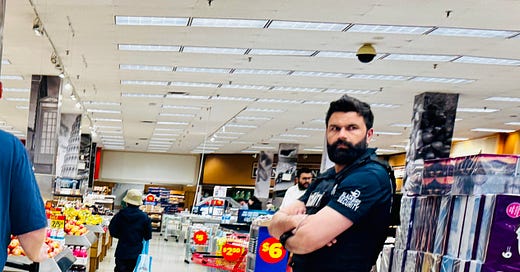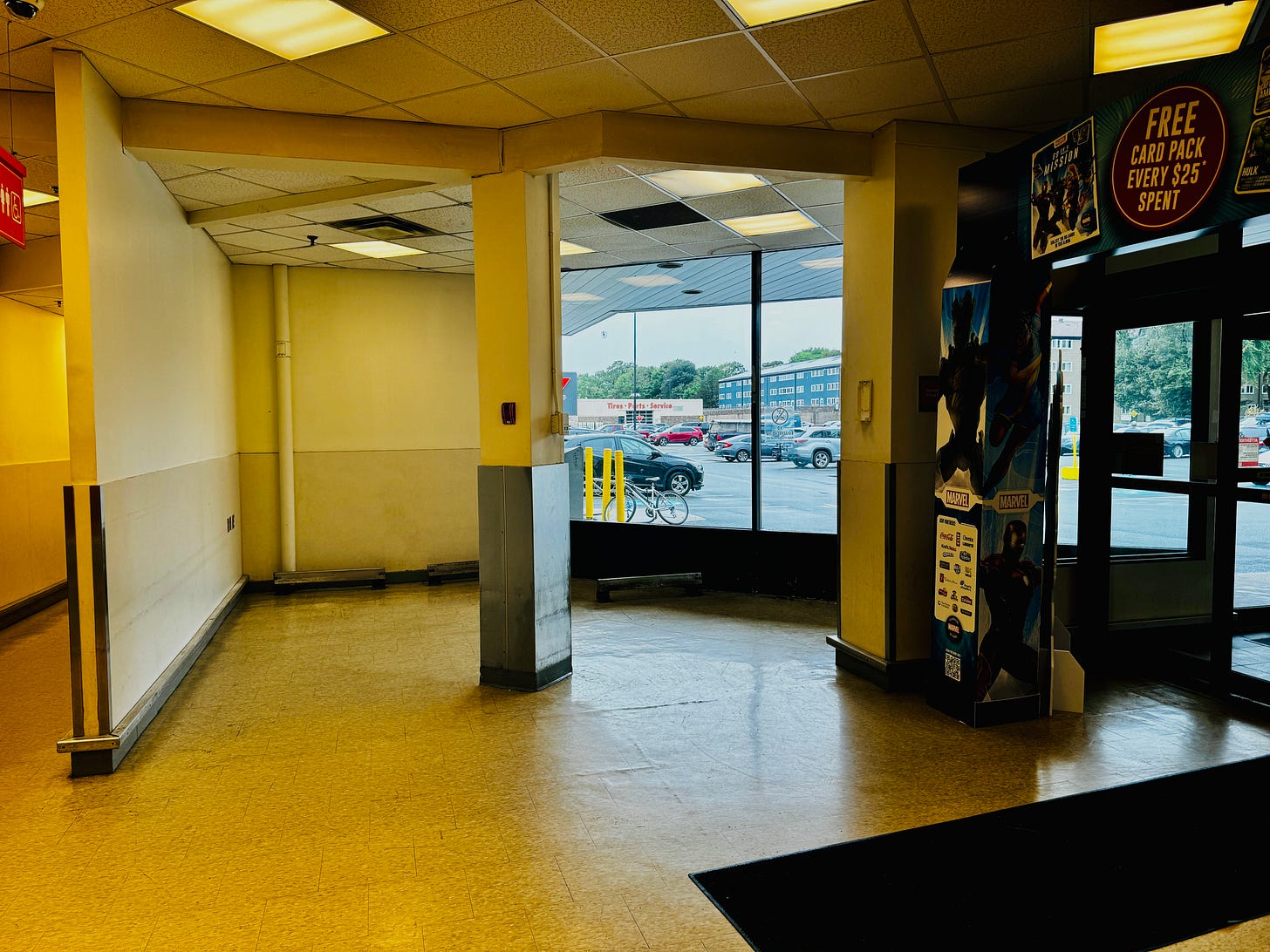Dumb Stuff MBA's Think Of
You're not wrong. Grocery Carts are Getting Bigger... and the Aisles are Getting Smaller
If you ever deal with any business, government office, hospital, or bureaucratic system of any sort and you run into something that just doesn’t make sense, there’s a real good chance it’s the result of something someone learned at some business school somewhere. Picture long-dead professors - once efficiency experts in a widget factory of some sort - with the power of tenure, indoctrinating would-be Masters of Business (MBA’s) in the fine art of applying widget factory thinking to real-life situations where you and I have to live.
It doesn’t work. Representative government and public healthcare systems are not businesses. In fact, most businesses aren’t factories and seldom benefit from efficiency or other ideologies of the MBA, taken to the Nth degree. But the ideas get truly bizarre when the MBA’s get into psychology. It becomes a mystical hocus pocus conjured with jargon and the junkiest most cynical thinking imaginable. It would be laughable… if we didn’t have to deal with their bafflegab.
The other day I was in my local grocery store aka the giant monopolistic mega-mart literally branded as The Superstore… over compensating much?
As always, I was frustrated by almost every aspect of the experience.
The security guards standing sentinel everywhere, overseers silently watching your every move yet no one to help with anything or even gather one of the last remaining broken carts so people have someplace to put the meagre amount of groceries their paycheque buys.
I had gone to buy seasonal local corn and some steak for a summer BBQ family feast. Yay! But not yay. Two things. They don’t have local corn… that’s not their business model. And when meat is cut this thin it’s called Carpaccio, not Steak.
And no, I don’t collect Marvel Universe Cards! I would rather collect Cancerverse cards.
Anyway. I wasn’t the only nonplused customer. There were not enough carts for the customers and it was an unpleasant game of musical carts for all.
So I complained.
And for sure I was not the only one.
Be Careful What You Wish for - There’s Always a Catch
So I wasn’t that surprised a couple days later when I returned to find this…
Probably 50 brand new carts in the store and a big coral out front.
But they weren’t just carts. They were the RAM 2500 of carts. I’m surprised they didn’t have dualies ("dually" is the more popular but incorrect spelling… so even if this note is long you can tell yourself you learned SOMETHING here).
What’s going on?
Congratulations! You’ve been optimized.
"Optimizing" has become the snazzy, tech-savvy way to talk about "efficiency" without sounding like you’re just squeezing blood from a stone. It’s the corporate-friendly term that suggests you're not just cutting corners or shaving seconds; you’re enhancing, fine-tuning, and achieving some sort of mythical peak performance. It’s efficiency with a makeover—glossed up to imply innovation rather than just good old-fashioned cost-cutting.
Now look. All I wanted was a little cart for some stuff. One without a wheel that’s flat on one side that made me cha chunk chachunk cha chunk around the store rattling like a grocery cart version of a peg-legged ghost pirate.
The History of Grocery Carts… yep, I’m interested in this stuff.
We take grocery carts for granted now, but once upon a time, all folks needed was a basket because you only wanted to take home what you could eat in a day or so. Before refrigeration and mega preservatives we all had a great place to store our groceries… in the store.
That all changed in 1937 when Sylvan Goldman, the owner of a Humpty Dumpty supermarket in Oklahoma, had a lightbulb moment after watching shoppers struggle with their groceries. He thought, "Why not make something with wheels that carries all this stuff for you?" Thus, the grocery cart was born. The design is more complex than you would imagine because they gotta stack.
But, like all great inventions, it didn’t catch on right away. The first shoppers were skeptical—men saw them as an affront to their strength… see feminist economist Katrine Marcals’ Mother Of Invention… a fabulous book examining of how gender bias has skewed innovation, technology, history and work… mostly through the story of rolling luggage. Women were reminded of baby strollers, and no one knew how to drive the darn things. Goldman wasn’t deterred. He hired actors to casually wheel carts around his store, showing the hesitant public how easy and stylish grocery shopping could be with a little rolling assistance.
Slowly, the public came around, and the grocery cart began its rise to stardom. Yet, as with anything that makes life easier, humans found a way to complicate it. The challenge shifted to what happened after the cart was loaded into the car. Suddenly, parking lots were littered with abandoned carts, like tumbleweeds in a Western ghost town. The war to get shoppers to return their carts was on, and it’s still being fought today right here on social media where it’s not uncommon to see shared fake articles about how the most inconsiderate, selfish and (of course) narcissistic people in the world are those who don’t return their grocery carts. No worse than getting you to do a pawn deal for a loonie to uncain a cart.
Fast forward to today, and grocery carts have not only survived but thrived—growing big enough to fit your whole pay cheque. There are almost 30 million grocery carts in North America.
The grocery cart's whole reason for existence is to encourage people to buy more than they can carry. So what happens when you increase the size of the cart? People buy more in order to fill it. In fact, marketing consultant Martin Lindstrom told "Today" that when the size of the cart doubled between 2009 and 2011, people bought 40% more stuff.
A New York Times article from 1975 quotes a brochure for Unarco's U-Com-70 line of large-capacity carts, demonstrating that cart manufacturers and stores have been colluding to encourage consumers to consume more since the birth of the shopping cart: "Bigger capacity carts sell more groceries. Today's shopper actually wants to buy more. ... Shoppers should not be limited or discouraged by limited capacity carts."
Marketing
Marketing is about raising profits and increasing the valuation of a business. It serves no other purpose. At least it didn’t until universities got so swamped in the jargon, buzzwords, and junk phrases that they started to believe all they were saying about ‘customer focus that is in reality just making people furious and spending a lot of their money which they would rather just keep in their pockets.
The answer is simple. Just stop it. Don’t spend any more of the customer’s money on marketing and MBA junk. Companies don’t have to stick with their mistakes just because they spent a lot of money and along time making them.
In Brandwashed – Tricks Companies Use to Manipulate Our Minds and Persuade Us to Buy, Martin Lindstrom says that when the size of the cart doubled people bought 40% more stuff. Now, if that math sounds nebulous it surely is. First, are people that dumb? No they are not. But even if they were, the size of the cart would not change the amount of money people have to spend on groceries over any given year. And if they bought more on one run, it would only mean they wouldn’t have to go back as often.
This kind of marketing expert talk, always presented as some sly, but totally unsupported, insight into how stupid the customers are, is the kind of stuff that MBA’s thrive on because they don’t want to do actual math, finance, and accounting, or actually figure out what’s wrong with using the GDP to estimate progress, growth, and prosperty. So they just call it marketing and shit talk their theoretical customers.
It’s the same thinking that packs more and more onto shelves in narrower asiles. It’s all for your convenience.
Anyway, Lindstrom is the crown prince of “Buyology” and amuch in demand speaker at business school mixers.
Why Do We Have To Deal With This?
Deeper down, there is a systemic problem. This has all just gone too far.
It is funny that our grocery carts are now almost as big as some of the shops Europeans buy in. The French can shop every day for just what they need because of the way their cities and lifestyles are structured. Many French people live in urban areas where local markets, bakeries, and grocery stores are within walking distance. Their culture also values fresh food, so they prefer to buy ingredients daily to ensure they’re getting the best quality.
In contrast, in North America, we tend to live in more spread-out areas, often far from grocery stores, and we lead busier lives that don’t always allow for daily shopping trips. Plus, we have larger homes with big refrigerators, so we tend to stock up and buy in bulk.
So, it's a mix of convenience, culture, and lifestyle that makes daily shopping practical for the French, while for many in North America, it just doesn’t fit into the way we live... and so MBA Bulshit rules our lives.
30 American people waiting for coffee vs 30 French people waiting for coffee…








